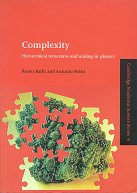The quantitative study of complexity is a rapidly developing subject with special impact in the fields of physics, mathematics, information science, and biology. Because of the variety of the approaches, no comprehensive discussion has previously been attempted. The aim of this book is to illustrate the ways in which complexity manifests itself and to introduce a sequence of increasingly sharp mathematical methods for the classification of complex behaviour. The authors offer a systematic, critical ordering of traditional and novel complexity measures, relating them to well-established physical theories, such as statistical mechanics and ergodic theory, and to mathematical models, such as measure preserving transformations and disccrte automata. A large number of fully worked out examples with new, unpublished results is presented, This study provides a classification of patterns of different origin and specifies the conditions under which various forms of complexity can arise and evolve. An even more important result than the definition of explicit complexity indicators is, however, the establishment of general criteria for the identification of analogies among seemingly unrelated fields and for the inference of effective mathematical models.
This book will be of interest to graduate students and researchers in physics (nonlinear dynamics, fluid dynamics, solid-state, cellular automata, stochastic processes, statistical mechanics and thermodynamics), mathematics (dynamical systems, ergodic and probability theory), information and computer science (coding, information theory and algorithmic complexity), electrical engineering, and theoretical biology.

